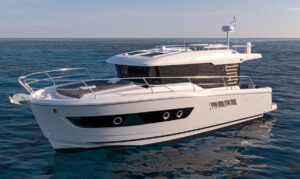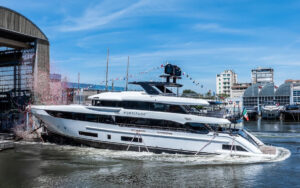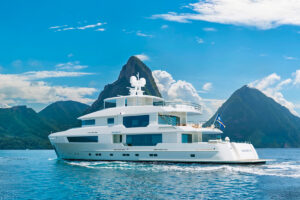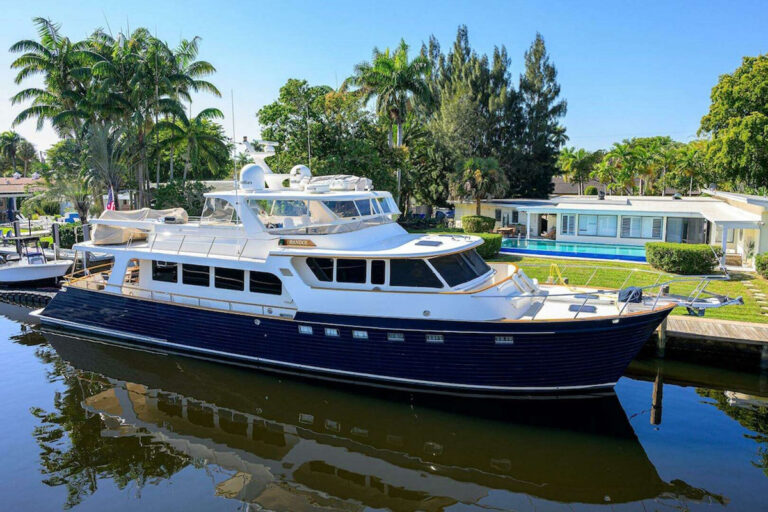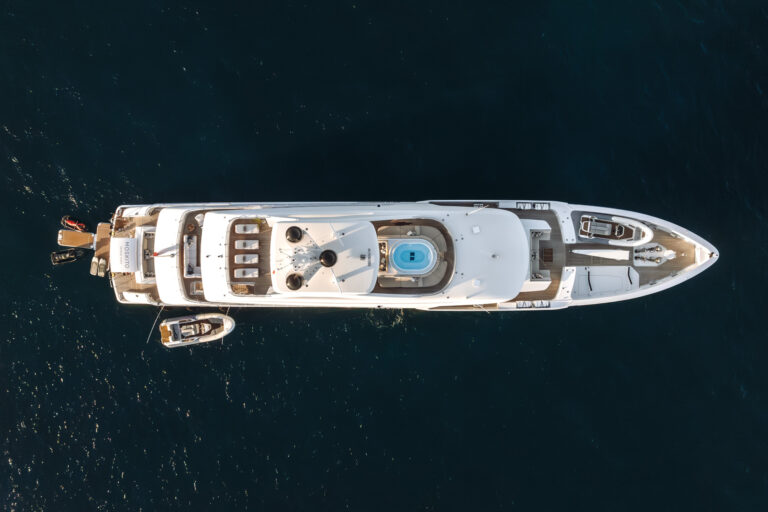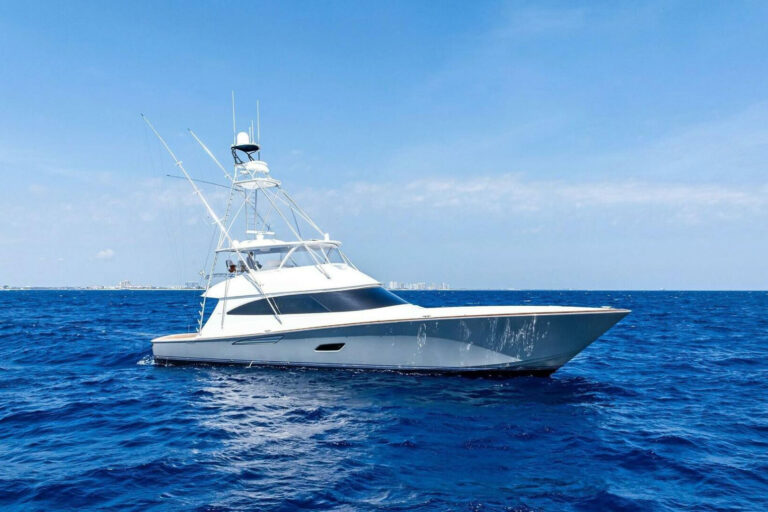
On may 26, 1906, a trio of sailboats cast off their lines in Brooklyn, New York, bound for the history books. The 28- and 38-footers were headed for Bermuda, and they were shockingly small racing yachts by the standards of the time. At the turn of that century, 120- to 130-foot America’s Cup yachts were the ocean-racing legends people knew by name — Defender, Vigilant, Columbia — yachts they read about in newspapers that left their fingers stained with ink, yachts that were always manned by professional crew, and that lay beyond the grasp of a public who thirsted for more. The smaller yachts going out that day, in the first running of what we now call the Newport Bermuda Race, were invited as a thumb in the eye to the notion that serious boating was for aristocrats only — no everyman need apply. The organizers of that 1906 race wanted to bring more yachtsmen into the ocean-racing fold, the way other visionaries were looking to do the same for everyday people in other pursuits. Two years later, the first Model T Ford was built. America was changing forever.
This was the world into which Yachting was born.
We published our first issue in 1907, and we have evolved along with the passions of yachtsmen every year since. The yachts are in some ways more impressive today, with technology and capabilities that would have seemed incomprehensible to the editors of our first issue, but our mission remains aligned with theirs from more than a century ago: We share news of the world’s most incredible yachts, and we celebrate the enthusiasm that drives the most intrepid of us to take the helm ourselves.

Yachting Magazine , 1925
Some memorable yachts that have joined us on this arc of history continue to give us new reasons to step aboard. There is Shamrock V, built in 1930 to compete for the America’s Cup and still on the water, offering charter vacations as the only wooden J Class in the world. There is Christina O, also for charter today, having launched in 1943 as a Canadian naval vessel and gone on to become Aristotle Onassis’ converted superyacht and, later, the presidential yacht of Greece. There is the 408-foot Savarona, launched in 1931 for the granddaughter of the man who engineered the Brooklyn Bridge and, today, serving as the presidential yacht of Turkey. Savarona was built for about $4 million at Blohm+Voss, a shipyard that also produced some of today’s most mesmerizing yachts, including two of the world’s three largest now afloat: the 536-foot Eclipse and the 531-foot Dubai.

Yachting Magazine , 1931

Charles Barthold
And we have discovered other yachts along the way as shipyards tantalized us with increasingly interesting designs. There were the first of the custom-built Trumpy wooden yachts, of which perhaps 90 survive. There was Moppie, the built-for-speed, 31-foot Bertram whose early 1960s racing exploits left yachtsmen so exhilarated that she still serves as inspiration for Bertram models today. Knit Wits, built in fiberglass, was the first sport-fisher from Hatteras Yachts. She was christened in 1960 and designed by Jack Hargrave, whose sketches turned into more than 7,000 yachts and ships on the water. There was the Riva Aqua-rama, introduced in 1962, replete with Italian style and elegance that was copied for decades the world over. There was the 57-foot Constellation that Chris-Craft launched in 1971, marking the end of its all-mahogany builds. Remember Failaka? She was the 105-footer that Azimut launched in 1982 as the biggest mass-produced fiberglass yacht at that time. There was Dasher, the first Hinckley Picnic Boat, which launched in 1994 and sparked a revival in Down East styling.
We could, of course, go on, but that would leave no room for the newest dream boats capturing our hearts, with builders adopting everything from pod-drive propulsion to shape-shifting hulls to glazing techniques that make entire yachts seem like they are made of glass when we stand at their helms, looking out. Those are the moments that continue to spark our imaginations, that take our breath away at the awesomeness of it all, that remind us to cherish our good fortune in having such a prominent role in the story of yachting as a sport. The feeling of elation that such moments inspire in our hearts, no doubt, is just as strong today as it was for the editors who wrote our first pages in 1907.
“It’s a very different publication, even from 10 years ago. Yachting is constantly evolving, and that’s a good sign.”
Charles Barthold
The Stewards
The incarnation of Yachting that you are reading at the dawn of 2017 emerged in the 1980s. Oliver S. Moore, who had worked at Time, Newsweek and Money, became Yachting‘s publishing director. He inherited a magazine filled with tiny text and small photographs, as well as an audience of die-hard sailors who were Yachting‘s base of readers and advertisers — a base that was shrinking as marinas experienced a historical shift, welcoming more powerboats than there ever used to be.
“I was looking at a sailing magazine as well as a failing magazine,” Moore recalls. “There weren’t enough sailboat advertisers. If we’d continued to publish a sailing magazine, we would’ve gone out of business.”
During the next few years, Yachting began its progression toward the future of boating, showing fewer boats that had sticks and sails, and embracing big-gun MTUs and Volvo Pentas. Not every reader accepted the change, which Moore says was needed if Yachting was to survive.
“It was bitter, and it was angry,” he says. “They thought that I was destroying this precious national treasure. I was vilified. But it started to happen.”

Yachting Magazine , 1955

Yachting Magazine , 2001

Peter Janssen
Charles Barthold picked up the mantle as editor-in-chief and cemented the transition with features such as The Yachting Registry, a printed list of yachtbuilders that helped enthusiasts find the right shipyard for their style of boat. The world of cruising opened up to even more people, and editors like Barthold found themselves on journeys that inspired readers’ dreams of cruising far, as well as cruising often.
“I got to go on incredible adventures — South Africa, the Panama Canal, cruising the Caribbean, sailing in Europe — but it made me realize how lucky I am to be on Long Island Sound,” he says of where he continues to boat today, from his home in Connecticut. “Many of these places are spectacular in their own right, but on this end of Long Island Sound, within 20 or 30 miles, there are incredible places to go.”
Peter Janssen took Yachting‘s helm in the mid-2000s, arriving from sister magazine Motorboating & Sailing as the modern-day superyacht market continued to shock the world with its levels of luxury and jaw-dropping scale.
“At Motorboating & Sailing, we did boats from 25 to 75 feet, which is fine, but I had never been to the Monaco show or the Antigua charter show, those kinds of things. I remember the first time I went, the overnight flight on Delta from Kennedy [airport] to Nice, France, and then you walk 100 yards to a helipad and fly about 50 feet over the water, and 10 minutes later you’re landing in Monaco. And I thought, ‘This is really cool.'”

Yachting Magazine , 2002
The Future
It is really cool, and it promises to remain so for years to come. The yachts continue to get more fascinating, with features that make it possible for someone with no boating experience to step aboard, plug waypoints into a display, steer by joystick and embrace the sport — a far cry from what it took to sail in that first Newport Bermuda Race more than a century ago.
“Yachting is the gold standard. The name says it all. I think there will always be a Yachting, in one form or another.”
Peter Janssen
“It was so different back then, and in many ways, more interesting,” Janssen says, explaining how he sorted through Yachting‘s earliest issues to produce the magazine’s 100th anniversary editions in 2007. “There was one story after another. They had people doing things. It was harder to do things then, so the people were, in a sense, more courageous to be out doing those things.”
Perhaps, but that doesn’t mean they were any luckier. When we look out at the horizon, we have the blessing of knowing there is, indeed, much more to come.

